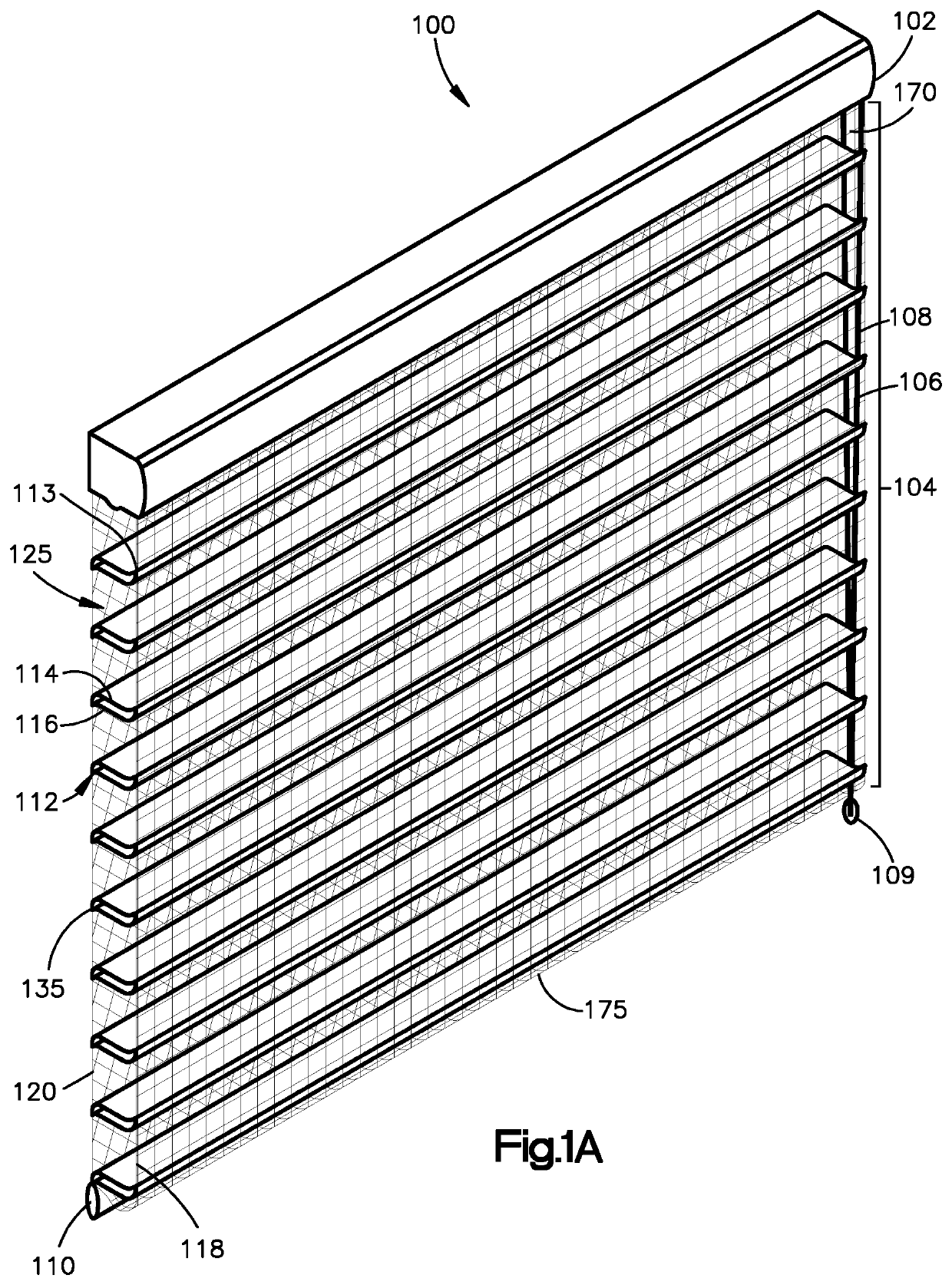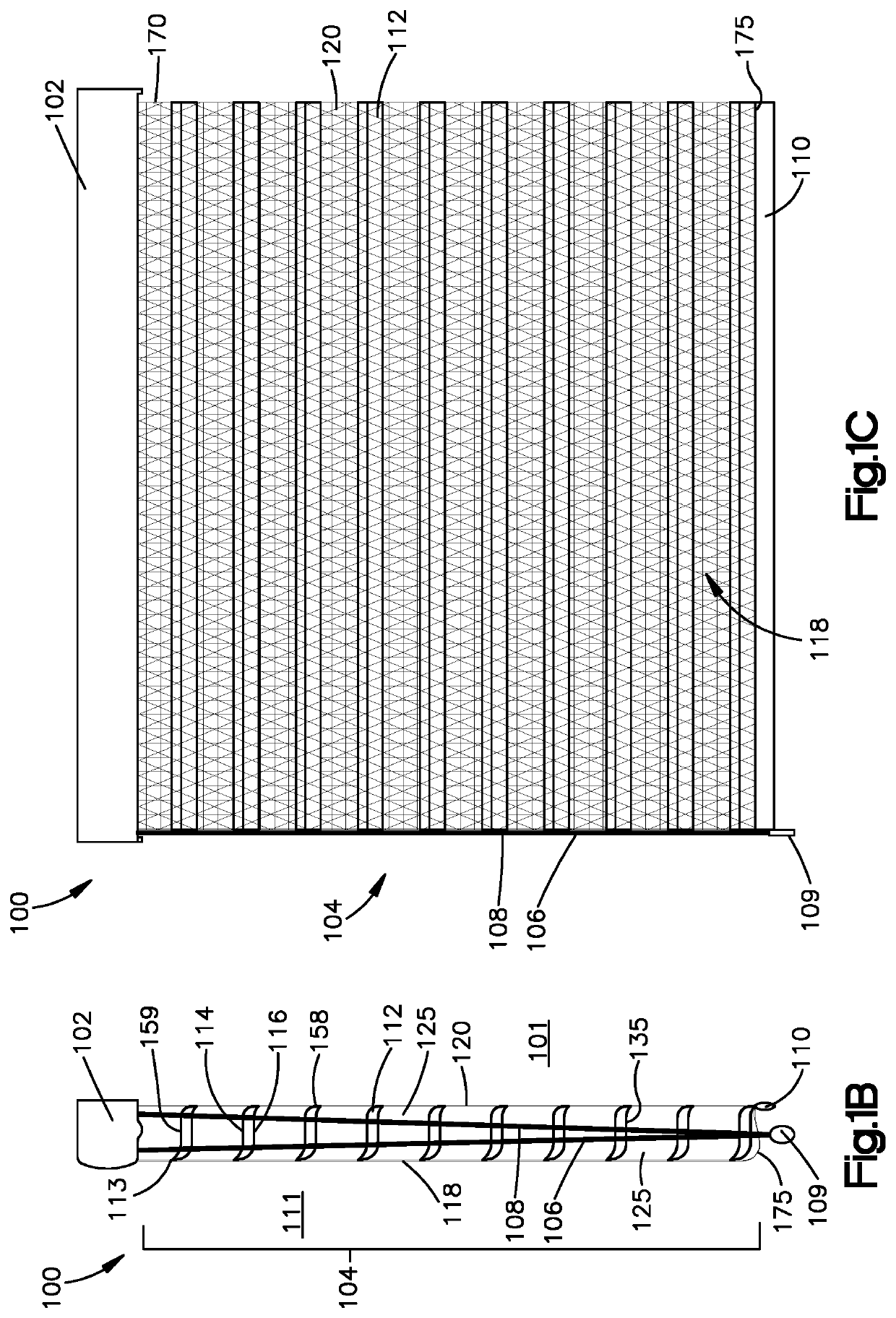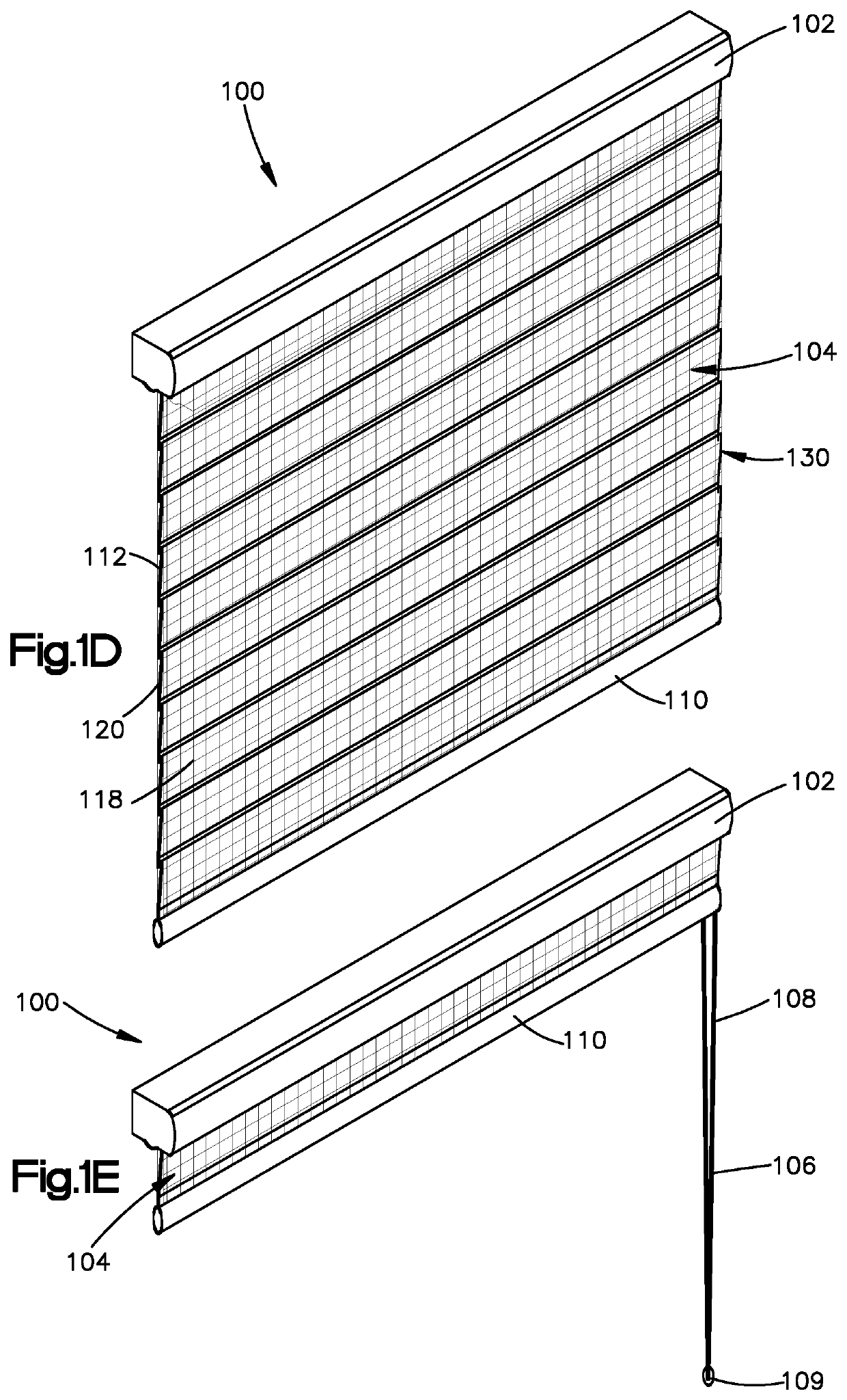Covering for architectural features, related systems, and methods of manufacture
a technology for architectural features and coverings, applied in the field of coverings for architectural features, can solve the problem of limiting the view of such sheer materials, and achieve the effect of reducing the risk of damag
- Summary
- Abstract
- Description
- Claims
- Application Information
AI Technical Summary
Benefits of technology
Problems solved by technology
Method used
Image
Examples
Embodiment Construction
[0045]In the following detailed description, numerous details are set forth in order to provide an understanding of an architectural covering, its method of operation, and method of manufacture. However, it will be understood by those skilled in the art that the different and numerous embodiments of the architectural covering, and its method of operation and manufacture may be practiced without these specific details, and the claims and invention should not be limited to the embodiments, subassemblies, or the specified features or details specifically described and shown herein. The description provided herein is directed to one of ordinary skill in the art and in circumstances, well-known methods, procedures, manufacturing techniques, components, and assemblies have not been described in detail so as not to obscure other aspects, or features of the architectural covering.
[0046]Accordingly, it will be readily understood that the components, aspects, features, elements, and subassemb...
PUM
| Property | Measurement | Unit |
|---|---|---|
| width | aaaaa | aaaaa |
| width | aaaaa | aaaaa |
| width | aaaaa | aaaaa |
Abstract
Description
Claims
Application Information
 Login to View More
Login to View More - R&D
- Intellectual Property
- Life Sciences
- Materials
- Tech Scout
- Unparalleled Data Quality
- Higher Quality Content
- 60% Fewer Hallucinations
Browse by: Latest US Patents, China's latest patents, Technical Efficacy Thesaurus, Application Domain, Technology Topic, Popular Technical Reports.
© 2025 PatSnap. All rights reserved.Legal|Privacy policy|Modern Slavery Act Transparency Statement|Sitemap|About US| Contact US: help@patsnap.com



